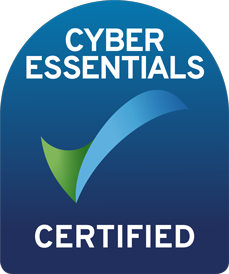This page describes the product life cycle policy for Rapita Systems software and hardware products, and lists the current stage of these products in their life cycle.
Software products
Rapita Systems' software products can be in one of the following states:
- In development – future product versions in active development.
- Current – the most recent major or minor version or any incremental version based on that version. For users with an active support and maintenance contract, we provide full support for current versions, including access to our support helpline, workarounds, migration support and bugfixes. We may issue multiple incremental releases while a version is current.
- Superseded – a newer version (excluding incremental releases, see below) of the product was issued in the last twelve months. For superseded versions, our standard support and maintenance service includes access to our support helpline, workarounds, access to current and superseded versions of our software and migration support. For superseded versions, bugfixes are at the discretion of Rapita Systems unless you have an active frozen version support package.
- Deprecated (with support) – a version is deprecated twelve months after it was superseded. For deprecated versions, our standard support and maintenance service includes access to our support helpline, workarounds, access to current and superseded versions of our software and migration support. For deprecated versions, we do not provide bugfixes unless you have an active frozen version support package.
- End of life – a version reaches its end of life ten years after it was released. Our standard support package does not include support or bug fixes for versions that have reached their end of life, but this is available through our frozen version support package.
Standard software products
Rapita Systems standard software products are identified by:
- A major version number. This number increments when we release a major update to a product.
- A minor version number. This number increments when we release a minor update to a product.
- An (optional) incremental release number. This letter increments when we release a version to resolve known issues. Incremental releases do not introduce new features. Initial releases of new product versions do not have an incremental release number.
Version numbers are written in the format <major><minor><incremental>, for example 3.0a.
When a new version of the Rapita Verification Suite (RVS) is released, a new version of each RVS plugin is also released. For example, when RVS 3.6 was released, RapiCover 3.6, RapiTime 3.6 and RapiTask 3.6 were also released.
We do not guarantee that different versions of our products behave identically or are fully compatible with each other. If you want to ensure identical behavior (for example identical placement of instrumentation), contact us at support@rapitasystems.com.
Custom tools
We develop custom tools to be used alongside our standard products. These are identified by the tool name, major version number, minor version number and an incremental release number.
Custom tools are compatible with standard products if the major and minor version numbers match.
For example:
RTOS demux filter tool v3.4.1 is the first release version of the RTOS demux filter tool. It is compatible with RVS 3.4, 3.4a, 3.4b etc.
RVS release schedule
We have a regular release schedule for RVS products, which includes 4 planned qualified software releases per year:
- We release new versions of RVS including new features and enhancements (major or minor versions) twice a year (last working days of January and July).
- We release incremental releases of RVS that do not include new features or enhancements 3 months after each new feature release (last working days of April and October).
We may also produce extra incremental releases on demand.
Software product status
The tables below show the current status of Rapita Systems' RVS software versions and RTBx firmware versions:
Version | Status |
|---|---|
RVS 3.24 (January 2026) | In development, follow the roadmap |
RVS 3.23 (August 2025) | Current |
RVS 3.22 (January 2025), RVS 3.22a (April 2025) | Superseded, will be deprecated on 31st August 2026 |
RVS 3.21 (September 2024), RVS 3.21a (December 2024) | Superseded, will be deprecated on 31st January 2026 |
RVS 3.20 (February 2024), RVS 3.20a (April 2024) | Superseded, will be deprecated on 30th September 2025 |
RVS 3.19 (July 2023), RVS 3.19a (October 2023) | Deprecated on 28th February 2025, will reach end of life on 28th July 2033 |
RVS 3.18 (March 2023), RVS 3.18a (April 2023) | Deprecated on 31st July 2024, will reach end of life on 31st July 2034 |
RVS 3.17 (July 2022), RVS 3.17a (September 2022), RVS 3.17b (October 2022) | Deprecated on 1st March 2024, will reach end of life on 29th July 2032 |
RVS 3.16 (January 2022), RVS 3.16a (April 2022) | Deprecated on 31st July 2023, will reach end of life on 28th January 2032 |
RVS 3.15 (July 2021), RVS 3.15a (October 2021) | Deprecated on 31st January 2023, will reach end of life on 30th July 2031 |
RVS 3.14 (February 2021), RVS 3.14a (April 2021) | Deprecated on 29th July 2022, will reach end of life on 28th February 2031 |
RVS 3.13 (July 2020), RVS 3.13a (October 2020) | Deprecated on 28th February 2022, will reach end of life on 31st July 2030 |
RVS 3.12 (April 2020) | Deprecated on 31st July 2021, will reach end of life on 30th April 2031 |
RVS 3.11 (January 2020), RVS 3.11a (March 2020) | Deprecated on 30th April 2021, will reach end of life on 31st January 2030 |
RVS 3.10 (October 2019) | Deprecated on 31st January 2021, will reach end of life on 31st October 2029 |
RVS 3.9 (September 2019) | Deprecated on 31st October 2020, will reach end of life on 30th September 2029 |
RVS 3.8 (January 2019), RVS 3.8a (June 2019) | Deprecated on 30th September 2020, will reach end of life on 31st January 2029 |
RVS 3.7 (April 2018), RVS 3.7a (June 2019) | Deprecated on 31st January 2020, will reach end of life on 30th April 2028 |
RVS 3.6 (December 2016) | Deprecated on 31st January 2020, will reach end of life on 31st December 2026 |
RVS 3.5 (June 2016) | Deprecated on 31st December 2017, will reach end of life on 30th June 2026 |
RVS 3.4 (September 2015), RVS 3.4a-c (October 2015 - February 2016) | Deprecated on 30th June 2017, will reach end of life on 30th September 2025 |
Version | Status |
|---|---|
RTBx 2.1 (December 2017) | Current |
RTBx 2.0 (July 2017) | Deprecated on 31st December 2018, will reach end of life on 30th July 2027 |
Rapita Systems can provide additional support services for deprecated and superseded software products through our frozen version support package. Contact us to find out more.
Hardware products
Rapita Systems' hardware products can be in one of two states:
- Current – the most recent version.
- Deprecated – the hardware version is no longer available for purchase. If you have a warranty for Deprecated hardware that malfunctions, we may either repair it, or swap it with the most compatible model if this is not possible or feasible. We inform all customers before making a hardware version deprecated to discuss implications and potential upgrade paths.
Hardware product status
The table below shows the current status of Rapita Systems' RTBx hardware versions:
Version | Status |
|---|---|
RTBx 2xxx series | Current |
RTBx 1xxx series | Deprecated on 31st December 2017 |
MACH178 Foundations
MACH178 Foundations products can be in one of two states:
- Current – the most recent version.
- Deprecated – the version is no longer available for purchase.
MACH178 Foundations product status
The table below shows the current status of Rapita Systems' MACH178 Foundations versions:
Version | Status |
|---|---|
MACH178 Foundations Version 1 (September 2024) | Current |

 Rapita System Announces New Distribution Partnership with COONTEC
Rapita System Announces New Distribution Partnership with COONTEC
 Rapita partners with Asterios Technologies to deliver solutions in multicore certification
Rapita partners with Asterios Technologies to deliver solutions in multicore certification
 SAIF Autonomy to use RVS to verify their groundbreaking AI platform
SAIF Autonomy to use RVS to verify their groundbreaking AI platform
 What does AMACC Rev B mean for multicore certification?
What does AMACC Rev B mean for multicore certification?
 How emulation can reduce avionics verification costs: Sim68020
How emulation can reduce avionics verification costs: Sim68020
 Multicore timing analysis: to instrument or not to instrument
Multicore timing analysis: to instrument or not to instrument
 How to certify multicore processors - what is everyone asking?
How to certify multicore processors - what is everyone asking?
 Certifying Unmanned Aircraft Systems
Certifying Unmanned Aircraft Systems
 DO-278A Guidance: Introduction to RTCA DO-278 approval
DO-278A Guidance: Introduction to RTCA DO-278 approval
 ISO 26262
ISO 26262
 Data Coupling & Control Coupling
Data Coupling & Control Coupling
 DASC 2025
DASC 2025
 DO-178C Multicore In-person Training (Fort Worth, TX)
DO-178C Multicore In-person Training (Fort Worth, TX)
 DO-178C Multicore In-person Training (Toulouse)
DO-178C Multicore In-person Training (Toulouse)
 HISC 2025
HISC 2025










